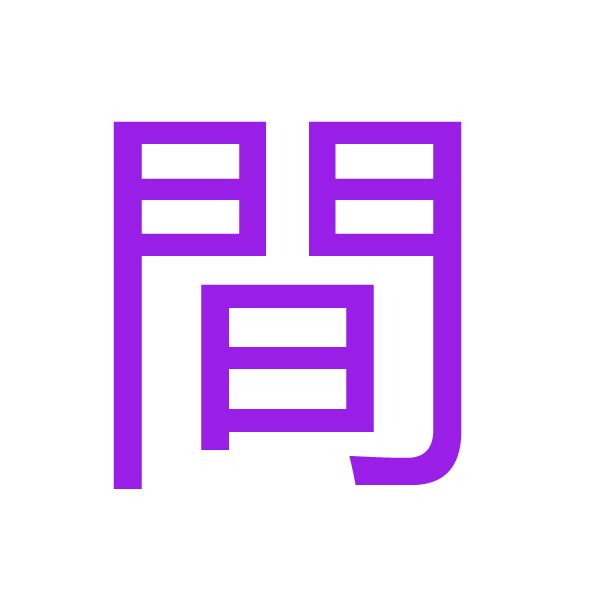
The Kanji: 間 (Ma/Aida/Kan) - The "Interval" Kanji
The kanji "間" is a profoundly important character that represents the concepts of interval, space between, time, and relationship. It captures the Japanese aesthetic of "Ma" (間) – the beauty and importance of negative space.
1. Meaning and Usage
Core Meanings: Interval; space between; time; pause; relationship.
Readings:
Kun'yomi (Japanese reading): あいだ (aida), ま (ma)
On'yomi (Chinese reading): カン (kan), ケン (ken)
Common Words and Compounds:
時間 (じかん / jikan) - Time
人間 (にんげん / ningen) - Human being
間 (あいだ / aida) - Between; interval
瞬間 (しゅんかん / shunkan) - Instant; moment
仲間 (なかま / nakama) - Companion; colleague
2. Writing and Stroke Order: Framing Space
The correct kanji writing for "間" demonstrates the important "enclosure" structure in kanji. Its stroke order creates a balanced character that visually represents its meaning.
Stroke Order:
Stroke 1: Left vertical stroke of the gate radical (門)
Stroke 2: Top horizontal and right vertical stroke (one continuous stroke)
Stroke 3: Bottom horizontal stroke to complete the enclosure
Stroke 4: Sun component (日) inside:
Left vertical
Top horizontal & right vertical
Middle horizontal
Bottom horizontal
Significance of Correct Kanji Writing:
Enclosure First Rule: Like other enclosure-type kanji, you create the outer "gate" (門) first before writing the contents inside
Balance and Proportion: The inner component (日) should be centered with equal spacing on all sides, visually creating the "space" that the character represents
Radical Recognition: This character uses the "gate" radical (もんがまえ), which appears in many kanji related to openings and passages
3. Historical Origin and Evolution
The history of "間" beautifully illustrates how ancient people conceptualized space and time.
Oracle Bone Script & Bronze Script:
The original character was composed of:
Moon (月) between two gates (門)
The imagery showed moonlight streaming through the crack between double gates, representing:The physical space between the gates
The temporal moment of seeing the moonlight
The fleeting nature of the observation
Seal Script:
The character evolved to replace the moon with sun (日), creating the modern form. This change maintained the core concept of light visible through an opening, but with the more universal symbol of the sun.
Modern Form:
The modern "間" preserves this elegant composition:
門 (gate) - representing boundaries or limits
日 (sun) - representing what becomes visible in the space between
Philosophical and Cultural Connection:
"間" embodies one of the most important concepts in Japanese aesthetics and philosophy. The concept of "Ma" (間) refers to:
The pause in music or conversation
The space between objects in art and architecture
The appropriate timing in social interactions
The silence that gives meaning to sound
This explains why "間" appears in words about:
Time (時間) - measured intervals
Human relations (人間) - beings existing in social space
Moments (瞬間) - discrete points in time
Companionship (仲間) - people sharing social space
Summary
The kanji "間" is much more than a simple character – it's a philosophical concept made visible. It began as a poetic image of moonlight between gates and evolved into the universal symbol for intervals, spaces, and relationships. Mastering its stroke order teaches the important enclosure structure in Japanese kanji writing. When you learn how to write kanji like "間," you're not just learning to draw a character; you're learning to understand the Japanese appreciation for the spaces between things – the pauses that give rhythm to music, the distances that create beauty in art, and the moments that give meaning to time itself.